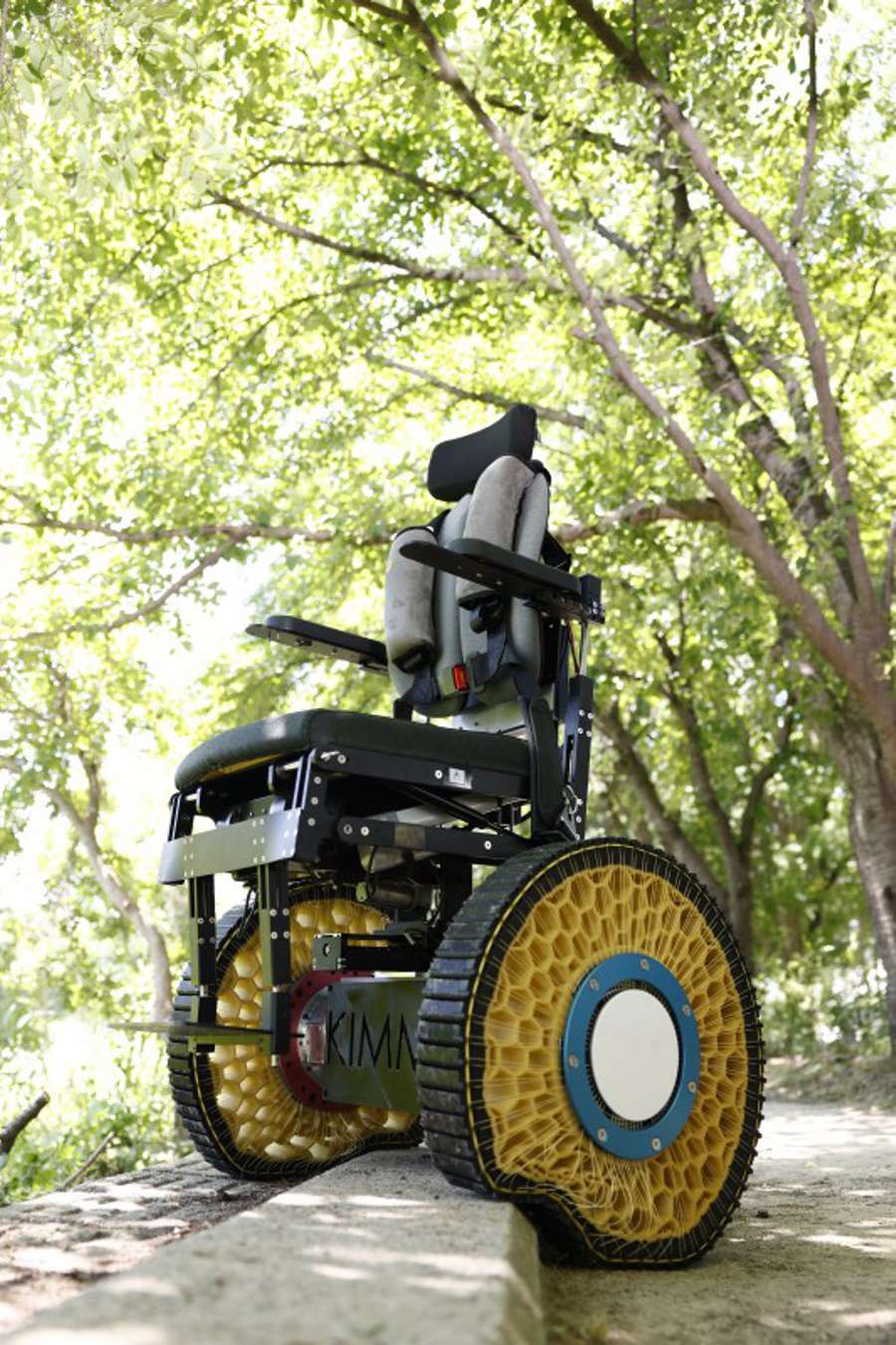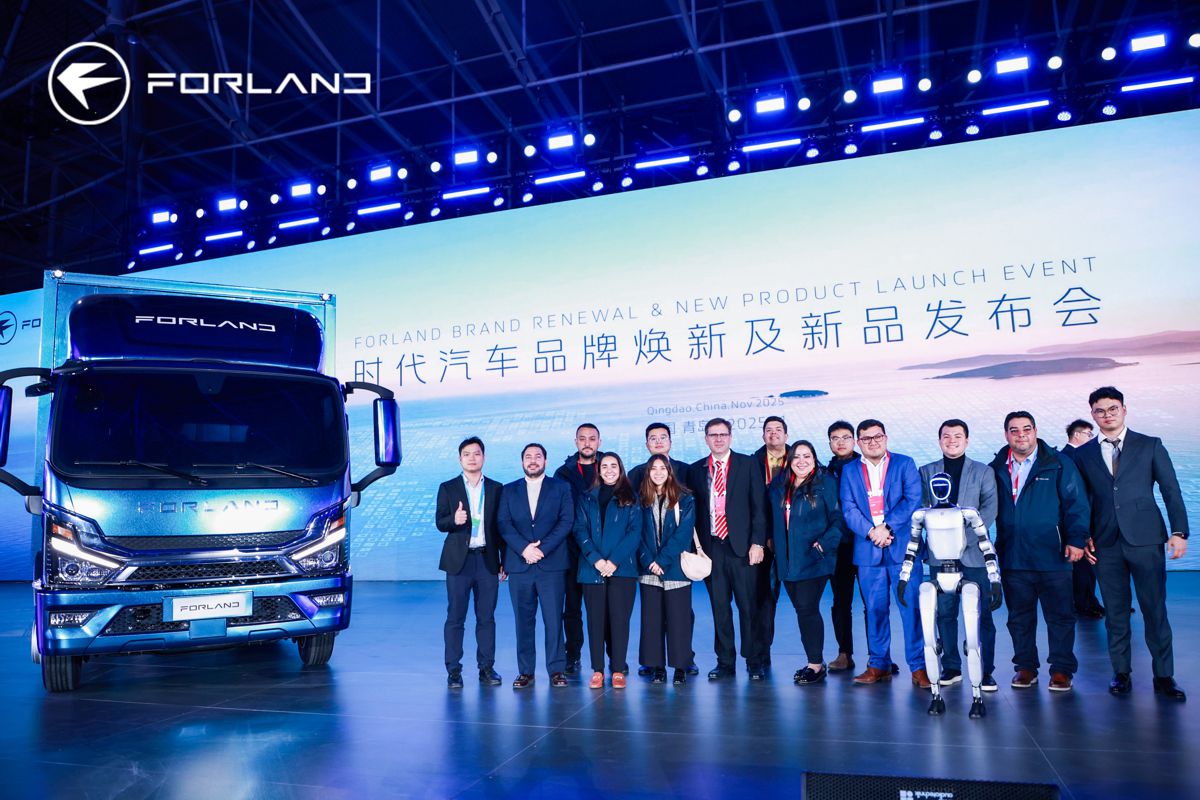KIMM develops a Variable-Stiffness Wheel that adapts to the Terrain
In a ground-breaking development that promises to reshape the future of mobility, the Korea Institute of Machinery and Materials (KIMM) has unveiled the world’s first variable-stiffness wheel, capable of adapting its rigidity in real time based on the terrain.
This innovative technology, inspired by the surface tension of a liquid droplet, is set to revolutionise how vehicles navigate everyday obstacles like stairs, rocks, and uneven surfaces, opening new possibilities for everything from personal mobility devices to advanced robotics.
The breakthrough wheel, developed by Principal Researcher Sung-Hyuk Song and Dong Il Park, Head of the Advanced Robotics Research Centre at KIMM, is designed to shift between a rigid and a deformable state, allowing vehicles to maintain optimal performance on flat surfaces while seamlessly adjusting to tackle rough terrain. This dynamic approach to wheel design marks a significant departure from traditional wheels, which often struggle with balancing flexibility and stability.
A Wheel That Changes on Demand
The KIMM-developed morphing wheel combines a smart chain block structure with a flexible outer edge, connected by a wire spoke system to the wheel’s hub. The wheel’s stiffness is adjusted through changes in the tension of these wires, mimicking the way surface tension in a liquid droplet maintains its shape under varying conditions.
- Dynamic Stiffness Control: When the hub rotates or changes distance, the wire spokes tighten or loosen, adjusting the surface tension of the smart chain block. When the spokes pull the smart chain blocks inward, the wheel stiffens, making it ideal for driving on smooth surfaces. Conversely, when the tension is released, the wheel softens, allowing it to deform and adapt to uneven ground.
- Adaptive Design: This adaptability is not only crucial for overcoming obstacles but also for maintaining efficiency on flat surfaces. Unlike other flexible wheel designs, which remain deformed and reduce driving stability, the KIMM wheel retains its shape when rigidity is needed, thereby ensuring smooth, stable movement.
This pioneering wheel technology doesn’t just promise improved performance for everyday vehicles but also offers significant advantages for specialised applications, such as wheelchairs and robots, where manoeuvrability and stability are essential.

Overcoming Obstacles
The real-world impact of this technology is already being demonstrated through its application in various mobility systems, including two-wheeled wheelchairs and other mobile platforms. A lightweight, miniaturised version of the variable-stiffness mechanism has been integrated into these systems, showcasing the wheel’s potential to redefine how we think about mobility.
- Two-Wheeled Wheelchair: The variable-stiffness wheel enables the wheelchair to navigate tight spaces, roll over obstacles such as rocks, and even climb stairs up to 18 centimetres high. This adaptability allows users to experience a level of freedom and stability that was previously unattainable with traditional wheelchair designs.
- Four-Wheeled Mobile Systems: When applied to four-wheeled platforms, the wheel can overcome obstacles up to 1.3 times its radius, highlighting its capability to handle challenging terrain with ease. This opens up new possibilities for personal mobility devices and industrial robots that need to operate in complex environments.
Principal Researcher Sung-Hyuk Song explained the significance of this innovation: “One of the problems associated with quadrupedal and bipedal walking robots for overcoming obstacles is that movement efficiency is relatively low on flat surfaces, and that shaking inevitably occurs in the moving state. The newly developed morphing wheel is significantly meaningful in that it is capable of overcoming obstacles while at the same time maintaining high movement efficiency comparable to conventional wheels.”
A Leap Forward in Robotics and Mobility
This breakthrough goes beyond enhancing mobility systems; it challenges the limitations of existing technologies used in robotics and other fields. Conventional leg-type robots or wheel clusters designed for obstacle negotiation often face trade-offs in efficiency, stability, and complexity. The KIMM morphing wheel, with its real-time adaptability, presents a more efficient, versatile alternative.
Dong Il Park, Head of the Advanced Robotics Research Centre at KIMM, emphasised the broader potential of this technology: “This new technology for morphing wheels inspired by surface tension can help to overcome the limitations of conventional mechanical devices such as leg-type robots and wheel clusters for overcoming obstacles. It will likely find applications in a wide range of fields including wheelchairs, mobile robots, and personal mobility capable of overcoming obstacles.”

The Science Behind the Wheel
At the core of the morphing wheel’s innovation is its modular design, which allows the system to be easily integrated into a variety of platforms. The smart chain block structure, combined with wire spokes, enables the wheel to precisely control its rigidity without the need for complex sensors or machinery.
- Smart Chain Block: This is the key component that adjusts the wheel’s stiffness. When tension is applied, the chain block behaves like a rigid wheel; when released, it becomes soft and pliable.
- Wire Spokes: Acting like the structural skeleton, the wire spokes connect the wheel’s hub to its outer edge, controlling the surface tension and therefore the shape and function of the wheel.
This design offers not just flexibility but also durability, making the wheel suitable for long-term use in various challenging environments. The simplicity of the mechanism allows it to be scaled and adapted, ensuring its applicability across numerous industries.
Recognition and Future Prospects
The innovative morphing wheel has already earned significant recognition, being featured as the cover article in the August 2024 issue of Science Robotics, one of the leading journals in the field. The research was supported by a project aimed at developing independent mobility solutions for paraplegic individuals, funded by KIMM as part of its mission to drive technological advancement.
As a non-profit government-funded research institute under the Ministry of Science and ICT, KIMM has been at the forefront of developing machinery and material technologies since 1976. Their continued focus on R&D, testing, and commercialisation of innovative products has positioned them as a key player in South Korea’s technological landscape.

Paving the Way for the Future of Mobility
KIMM’s morphing wheel technology represents a significant leap forward in the design of mobile systems, addressing long-standing challenges in how vehicles navigate diverse terrains. From personal mobility aids to advanced robotics, the potential applications are vast and varied, promising to enhance efficiency, accessibility, and functionality.
As this technology evolves, it’s clear that the morphing wheel could set a new standard in how we approach vehicle design, making the world a little more navigable, one adaptable wheel at a time.




















